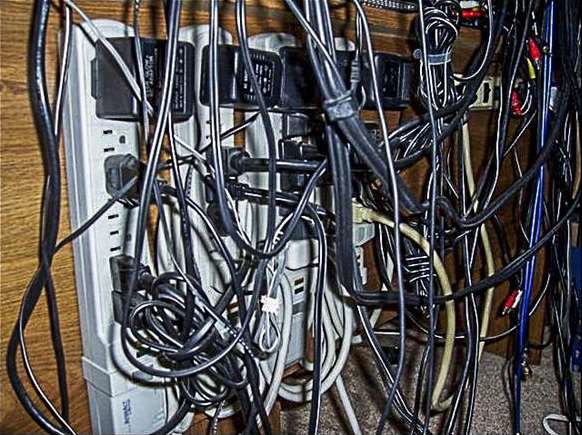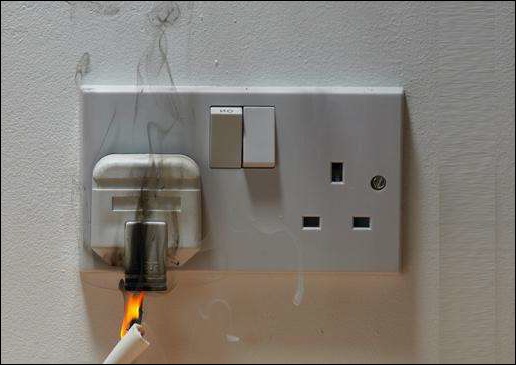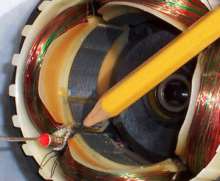
- Electrical Safety - Home
- Power System
- Indian Standards
- Low Voltage Overload Protection
- Short Circuit Protection
- Earth Fault Protection
- Earthing
- Types of the Supply System
- Cables
- Classification of Hazard-Prone Areas
- Safety Measures Related to Gas/Ducts/Fibre material
- Classification of Temperature
- Protection Against Weather Complexities
- Safe Electrical Equipment Design Characteristics
- Test Certifications
- Procedure to Mark Unprotected Equipment
- Maintenance of Unprotected Equipment
- Duties and Obligations
- Primary Ex-protection
- Secondary Ex-Protection
- Precautions Against Highly Flammable Contents
- Safety Measures During Handling Lighting Protection Equipment
- Bonding
- Transformer Safety
- Motor Handling Safety
- Generator Handling Safety
- Crane Handling Safety
- Safety Measures During Preventive Maintenance
- Types of Safety Equipment
- Implications of Human Behaviour
- Do's and Don'ts at a Glance
Low Voltage Overload Protection
We will now learn the different concepts related to low voltage overload protection.
Low Voltage Release
If the line voltage decreases to an abnormally low value, then the electrical machinery is damaged or unable to start the service. Because of the low voltage, the shunt coil on final contact holding solenoid of the starter disconnects the motor from the line. After the line voltage recovery the motor resumes its service. Low voltage release is unexpected and dangerous. To protect the machines, low voltage protection should be provided.
Low Voltage Over-current Fault
In low voltage condition, the protection against temperature is known as over-current protection. There are three major causes of over-current. The causes are listed below −
By equipment overload
The overload condition occurs when equipment is subjected to more than its rated value. This results in excessive heat production.
By short circuits
If there is any connection between the line to line or line to neutral conductors, it leads to short circuit. This generates temperature above the designated ratings.
By ground faults
If the electrical current flows from a conductor to uninsulated metal, then ground fault occurs.
Overload Protection
The current flows in the circuit based on the demand of loads. If the amount of current increases and exceeds the rating of the electrical equipment, then the system is overloaded. The wires or cables may not with withstand the higher current. The wires get hot and even melt the insulation. This leads to fire hazards. Therefore, overload protection is necessary to avoid such accidents.
Causes of Overload Condition
Following are the different causes of overload condition −
Overuse of extension cords and multiple plug adapters on the same circuit.
Running too many appliances at a time.
When more electricity is used like electric decoration.
The following image shows the overuse of extension cord −

The following image shows how a fire hazard is triggered due to overloading −

Signs of Low Voltage Overloading
Let us now see the different signs of low voltage overloading. Following are the different signs −
- Flickering of lights
- Sparks from appliances or wall sockets
- Warm switch plates
- Dimming of lights, television sets
- Speed reduction of motors
To avoid such problems, fuse and miniature circuit breakers are used as protecting devices. In fault condition, the fuse should blow and circuit breaker should open the circuit. It is also important to protect the conductors as well as equipment from the higher current.
Conductor Protection
Every cable has a current rating, which is the maximum safe current capacity of the cable. This current carrying capacity depends on the following factors −
Material − Aluminum or Copper
A structure − Individual conductor or grouped conductors
Path medium − Open air, grounded, or near the hot furnace or inside well-ventilated room, etc.
The fuse or breaker should be chosen based on the size of the cable. When the fault current reaches the fuse, it will blow. This gives a temporary overload condition to the cable. The cable must carry momentary overloads for a very short time period. A small amount of overheating cannot build a dangerous level. This is called slow blow protector.
Equipment Protection
The fuse and circuit breaker can protect the cable. However, these are not sensitive to protect a small use device plugged into the circuit. Therefore, these protection devices are built into the appliances to protect from overload. The external fuses are used in the main service panels or sub-panels but the equipment fuse or breakers protect every part of the electrical equipment that secures the system.
The following image shows the thermal fuse inside a motor −
